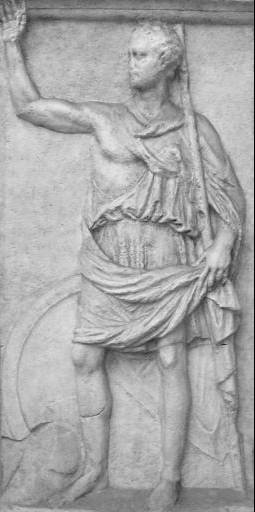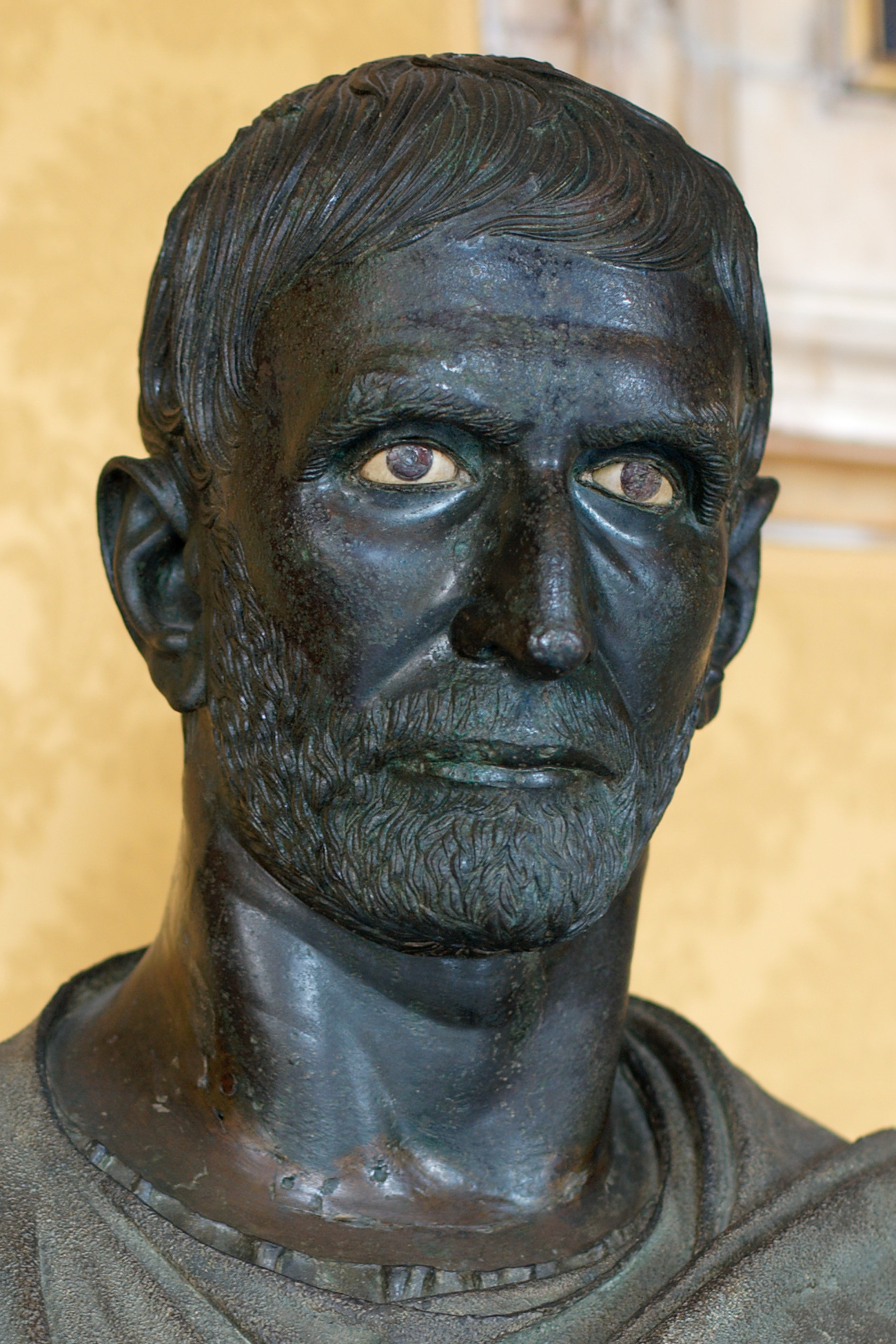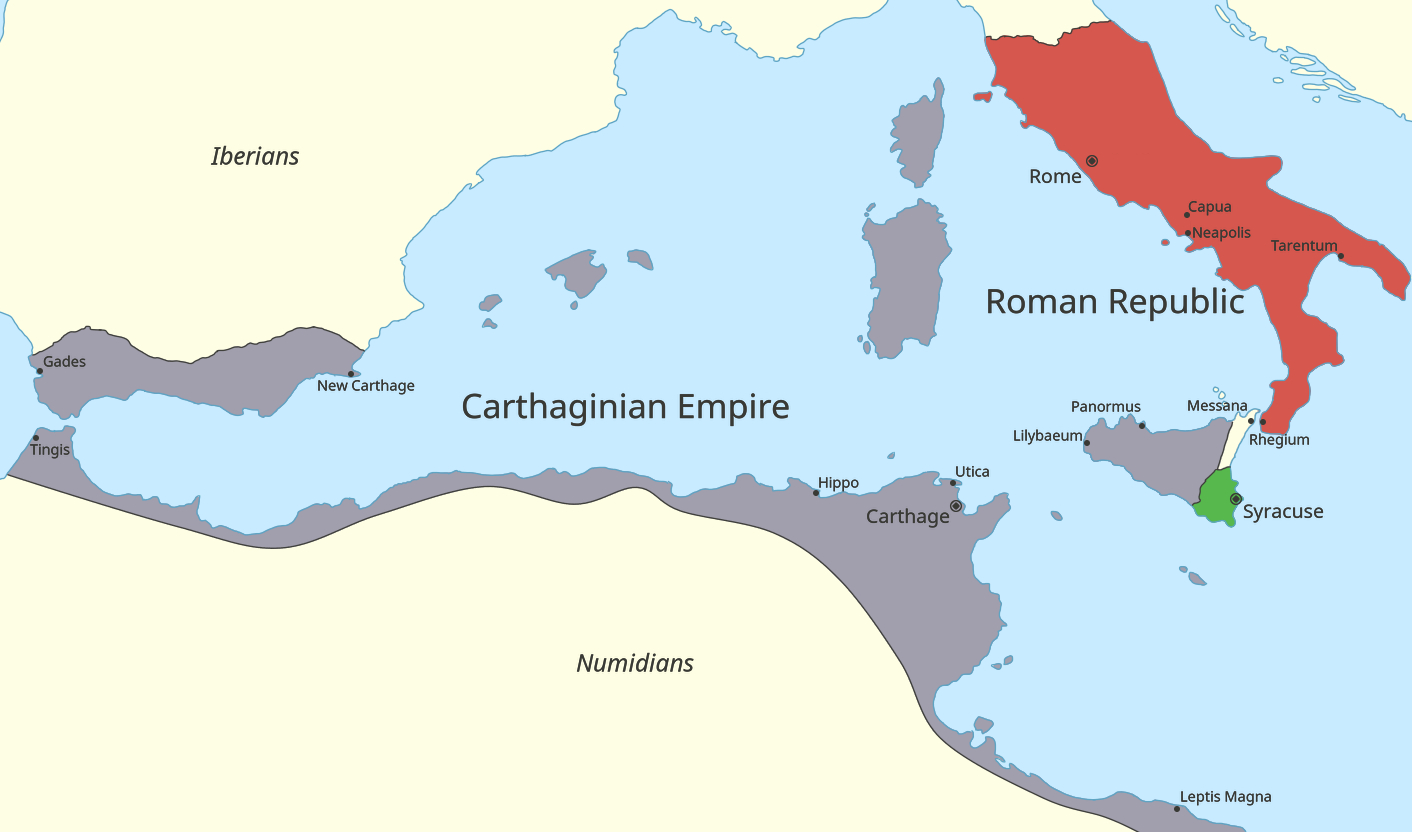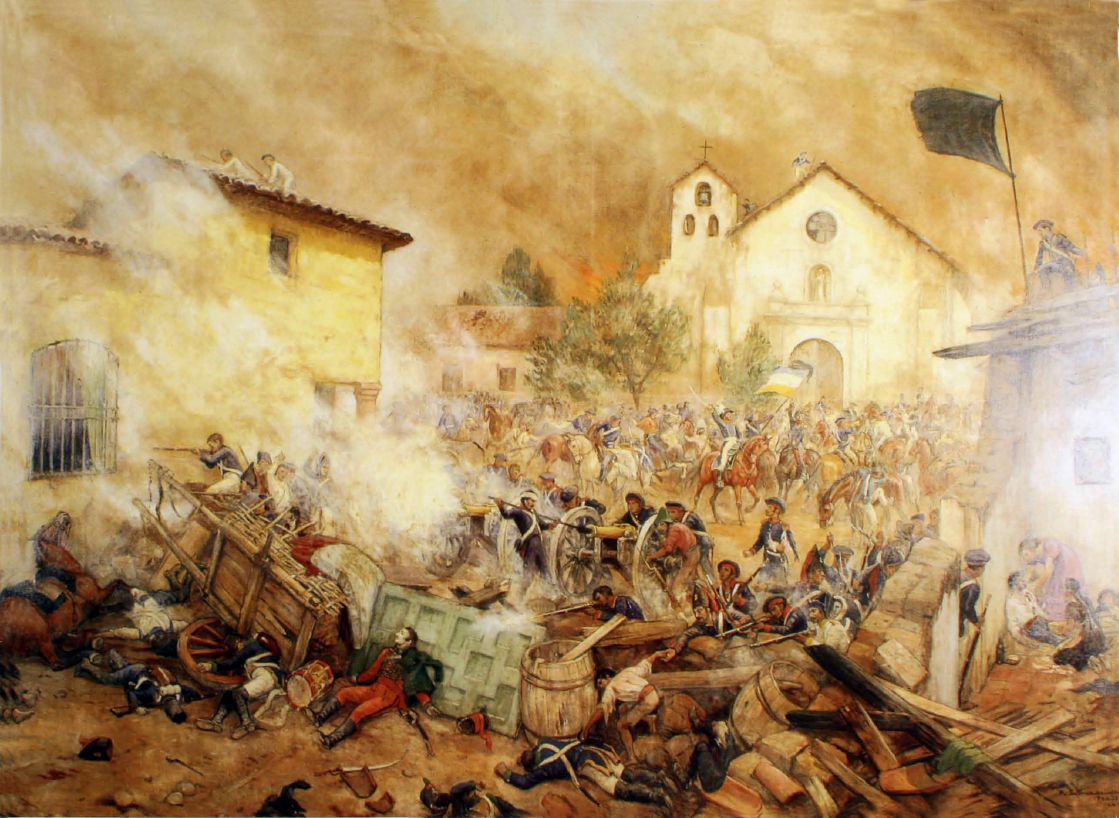|
Siege Of Aspis
The siege of Aspis or Clupea was fought in 256 BC between Carthage (state), Carthage and the Roman Republic. It was the first fighting on African land during the First Punic War. Background After defeating the Carthaginian navy sent to stop them from reaching Africa Province, Africa at the Battle of Cape Ecnomus, the Romans landed close to Aspis, to the south of Carthage. Battle The Romans moved to besiege Aspis by building a trench and palisade to defend their ships. Carthage was not yet prepared to fight on land and the city fell after the garrison made a short resistance.Siege of Aspis, 256 B.C. Rickard, J (10 May 2007), Siege of Aspis, 256 BC. Retrieved on December 13, 2008. By taking Clupea, the Romans controlled the area of land opposite to Carthage and secured their rear in order to scour the enemy before them. The ... [...More Info...] [...Related Items...] OR: [Wikipedia] [Google] [Baidu] |
First Punic War
The First Punic War (264–241 BC) was the first of three wars fought between Rome and Carthage, the two main powers of the western Mediterranean in the early 3rd century BC. For 23 years, in the longest continuous conflict and greatest naval war of antiquity, the two powers struggled for supremacy. The war was fought primarily on the Mediterranean island of Sicily and its surrounding waters, and also in North Africa. After immense losses on both sides, the Carthaginians were defeated and Rome gained territory from Carthage. The war began in 264 BC with the Romans gaining a foothold on Sicily at Messana (modern Messina). The Romans then pressed Syracuse, the only significant independent power on the island, into allying with them and laid siege to Carthage's main base at Akragas. A large Carthaginian army attempted to lift the siege in 262 BC but was heavily defeated at the Battle of Akragas. The Romans then built a navy to challenge the Carthaginians ... [...More Info...] [...Related Items...] OR: [Wikipedia] [Google] [Baidu] |
Kelibia
Kelibia (Kélibia) ( '), often referred to as Klibia or Gallipia by European writers, is a coastal town on the Cap Bon peninsula, Nabeul Governorate in the far north-eastern part of Tunisia. Its sand beaches are considered some of the finest in the Mediterranean. History Known in Roman times as Clypia or Clypea, () the town was founded by the Carthaginians as the fortified town of Aspis () in the 5th century BC. The Siege of Aspis in 255BC was the first battle of the First Punic War fought on African soil. Clypea was also the seat of an ancient Christian bishopric. At the Council of Carthage (411), which brought together Catholic and Donatist bishops, Clypea was represented by Bishop Leodicius and the Donatist Geminius. Aurilius was one of the bishops whom the Arian Vandal king Huneric summoned to Carthage in 484 and then exiled. Two other bishops of Clypia took part in the Council of Carthage (525) (Bishop Crescentius) and Council of Carthage (645) (Bishop Stephanus). ... [...More Info...] [...Related Items...] OR: [Wikipedia] [Google] [Baidu] |
Roman Republic
The Roman Republic ( ) was the era of Ancient Rome, classical Roman civilisation beginning with Overthrow of the Roman monarchy, the overthrow of the Roman Kingdom (traditionally dated to 509 BC) and ending in 27 BC with the establishment of the Roman Empire following the War of Actium. During this period, Rome's control expanded from the city's immediate surroundings to hegemony over the entire Mediterranean Sea, Mediterranean world. Roman society at the time was primarily a cultural mix of Latins (Italic tribe), Latin and Etruscan civilization, Etruscan societies, as well as of Sabine, Oscan, and Greek cultural elements, which is especially visible in the Ancient Roman religion and List of Roman deities, its pantheon. Its political organisation developed at around the same time as direct democracy in Ancient Greece, with collective and annual magistracies, overseen by Roman Senate, a senate. There were annual elections, but the republican system was an elective olig ... [...More Info...] [...Related Items...] OR: [Wikipedia] [Google] [Baidu] |
Carthage (state)
Ancient Carthage ( ; , ) was an ancient Semitic civilisation based in North Africa. Initially a settlement in present-day Tunisia, it later became a city-state, and then an empire. Founded by the Phoenicians in the ninth century BC, Carthage reached its height in the fourth century BC as one of the largest ''metropoleis'' in the world.George Modelski, ''World Cities: –3000 to 2000'', Washington DC: FAROS 2000, 2003. . Figures in main tables are preferentially cited. Part of former estimates can be read at Evolutionary World Politics Homepage Archived 2008-12-28 at the Wayback Machine It was the centre of the Carthaginian Empire, a major power led by the Punic people who dominated the ancient western and central Mediterranean Sea. Following the Punic Wars, Carthage was destroyed by the Romans in 146 BC, who later rebuilt the city lavishly. Carthage was settled around 814 BC by colonists from Tyre, a leading Phoenician city-state located in present-day ... [...More Info...] [...Related Items...] OR: [Wikipedia] [Google] [Baidu] |
Marcus Atilius Regulus
Marcus Atilius Regulus () was a Roman statesman and general who was a consul of the Roman Republic in 267 BC and 256 BC. Much of his career was spent fighting the Carthaginians during the first Punic War. In 256 BC, he and Lucius Manlius Vulso Longus defeated the Carthaginians at the naval battle off Cape Ecnomus; afterwards he led the Roman expedition to Africa but was defeated at the Bagradas River in spring of 255 BC. He was captured and then probably died of natural causes, with the story of his death later being much embellished. Life Regulus was first consul in 267 BC. He campaigned with his co-consul ( Lucius Julius Libo) against the Sallentini, captured Brundisium, and thence celebrated a double triumph. During the First Punic War, he was elected suffect consul in 256 BC, in place of Quintus Caedicius, who had died in office. With his colleague, Lucius Manlius Vulso Longus, he fought and defeated a large Carthaginian fleet off the coast ... [...More Info...] [...Related Items...] OR: [Wikipedia] [Google] [Baidu] |
256 BC
__NOTOC__ Year 256 BC was a year of the pre-Julian Roman calendar. At the time it was known as the Year of the Consulship of Longus and Caedicius/Regulus (or, less frequently, year 498 ''Ab urbe condita''). The denomination 256 BC for this year has been used since the early medieval period, when the Anno Domini calendar era became the prevalent method in Europe for naming years. Events By place Roman Republic * Rome aims for a quick end to hostilities in the First Punic War and decides to invade the Carthaginian colonies in Northern Africa to force the enemy to accept terms. A major fleet is built, including transports for the army and its equipment, and warships for their protection. Carthage under Hamilcar tries to intervene but a force under the Roman general and consul Marcus Atilius Regulus and his colleague Lucius Manlius Vulso Longus defeat the Carthaginian fleet in the Battle of Cape Ecnomus off the southern coast of Sicily. North Africa * Following the B ... [...More Info...] [...Related Items...] OR: [Wikipedia] [Google] [Baidu] |
Africa Province
Africa was a Roman province on the northern coast of the continent of Africa. It was established in 146 BC, following the Roman Republic's conquest of Carthage in the Third Punic War. It roughly comprised the territory of present-day Tunisia, the northeast of Algeria, and the coast of western Libya along the Gulf of Sidra. The territory was originally and still is inhabited by Berbers, known in Latin as the Numidae and Maurii'','' indigenous to all of North Africa west of Egypt. In the 9th century BC, Semitic-speaking Phoenicians from the Levant built coastal settlements across the Mediterranean to support and expand their shipping networks. In the 8th century BC, the settlement of Carthage became the predominant Phoenician colony. Rome began expanding into the Province of Africa after annexing Carthage in 146 BC at the end of the Punic Wars, and later into Numidia in 25 BC, establishing Roman colonies in the region. Africa was one of the wealthiest provinces i ... [...More Info...] [...Related Items...] OR: [Wikipedia] [Google] [Baidu] |
Battle Of Cape Ecnomus
The Battle of Cape Ecnomus or Eknomos () was a naval battle, fought off southern Sicily, in 256 BC, between the fleets of Carthage (state), Carthage and the Roman Republic, during the First Punic War (264–241 BC). The Carthaginian fleet was commanded by Hanno II the Great, Hanno and Hamilcar (Drepanum), Hamilcar; the Roman fleet jointly by the Roman consul, consuls for the year, Marcus Atilius Regulus (consul 267 BC), Marcus Atilius Regulus and Lucius Manlius Vulso Longus. It resulted in a clear victory for the Romans. The Roman fleet of 330 warships plus an unknown number of transports had sailed from Ostia Antica, Ostia, the port of Rome, and had embarked approximately 26,000 picked Roman legion, legionaries shortly before the battle. They planned to cross to Africa and invade the Carthaginian homeland, in what is now Tunisia. The Carthaginians were aware of the Romans' intentions and mustered all available warships, 350, off the south coast of Sicily to intercept them. With ... [...More Info...] [...Related Items...] OR: [Wikipedia] [Google] [Baidu] |
Palisade
A palisade, sometimes called a stakewall or a paling, is typically a row of closely placed, high vertical standing tree trunks or wooden or iron stakes used as a fence for enclosure or as a defensive wall. Palisades can form a stockade. Etymology ''Palisade'' derives from ''pale'', from the Latin word ', meaning stake, specifically when used side by side to create a wood defensive wall. In turn, ''pālus'' derives from the Old Italic word ''palūts'', which may possibly derive from the Proto-Indo-European word ''pelh'', meaning pale or gray. It may be related to the Proto-Uralic word ''pil'me'' (uncertain meaning) or the word ''pilwe'', meaning cloud. (see wikt:pale#Etymology_2, 'pale', English: Etymology 2 on Wiktionary). Typical construction Typical construction consisted of small or mid-sized tree trunks aligned vertically, with as little free space in between as possible. The trunks were sharpened or pointed at the top, and were driven into the ground and sometimes rein ... [...More Info...] [...Related Items...] OR: [Wikipedia] [Google] [Baidu] |
North Africa
North Africa (sometimes Northern Africa) is a region encompassing the northern portion of the African continent. There is no singularly accepted scope for the region. However, it is sometimes defined as stretching from the Atlantic shores of the Western Sahara in the west, to Egypt and Sudan's Red Sea coast in the east. The most common definition for the region's boundaries includes Algeria, Egypt, Libya, Morocco, Tunisia, and Western Sahara, the territory territorial dispute, disputed between Morocco and the list of states with limited recognition, partially recognized Sahrawi Arab Democratic Republic. The United Nations’ definition includes all these countries as well as Sudan. The African Union defines the region similarly, only differing from the UN in excluding the Sudan and including Mauritania. The Sahel, south of the Sahara, Sahara Desert, can be considered as the southern boundary of North Africa. North Africa includes the Spanish cities of Ceuta and Melilla, and the ... [...More Info...] [...Related Items...] OR: [Wikipedia] [Google] [Baidu] |
Battle Of Adys
The battle of Adys (or Adis) took place in late 256 BC during the First Punic War between a Carthaginian army jointly commanded by Bostar, Hamilcar and Hasdrubal and a Roman army led by Marcus Atilius Regulus. Earlier in the year, the new Roman navy had established naval superiority and used this advantage to invade the Carthaginian homeland, which roughly aligned with modern Tunisia in North Africa. After landing on the Cape Bon Peninsula and conducting a successful campaign, the fleet returned to Sicily, leaving Regulus with 15,500 men to hold the lodgement in Africa over the winter. Instead of holding his position, Regulus advanced towards the Carthaginian capital, Carthage. The Carthaginian army established itself on a rocky hill near Adys (modern Uthina) where Regulus was besieging the town. Regulus had his forces execute a night march to launch twin dawn assaults on the Carthaginians' fortified hilltop camp. One part of this force was repulsed and pursued down the ... [...More Info...] [...Related Items...] OR: [Wikipedia] [Google] [Baidu] |
Sieges Of The First Punic War
A siege () . is a military blockade of a city, or fortress, with the intent of conquering by attrition, or by well-prepared assault. Siege warfare (also called siegecrafts or poliorcetics) is a form of constant, low-intensity conflict characterized by one party holding a strong, static, defensive position. Consequently, an opportunity for negotiation between combatants is common, as proximity and fluctuating advantage can encourage diplomacy. A siege occurs when an attacker encounters a city or fortress that cannot be easily taken by a quick assault, and which refuses to surrender. Sieges involve surrounding the target to block provision of supplies and reinforcement or escape of troops (a tactic known as "investment"). This is typically coupled with attempts to reduce the fortifications by means of siege engines, artillery bombardment, mining (also known as sapping), or the use of deception or treachery to bypass defenses. Failing a military outcome, sieges can often be deci ... [...More Info...] [...Related Items...] OR: [Wikipedia] [Google] [Baidu] |






